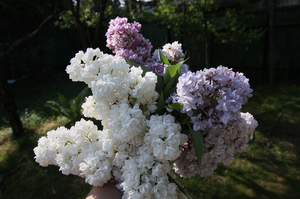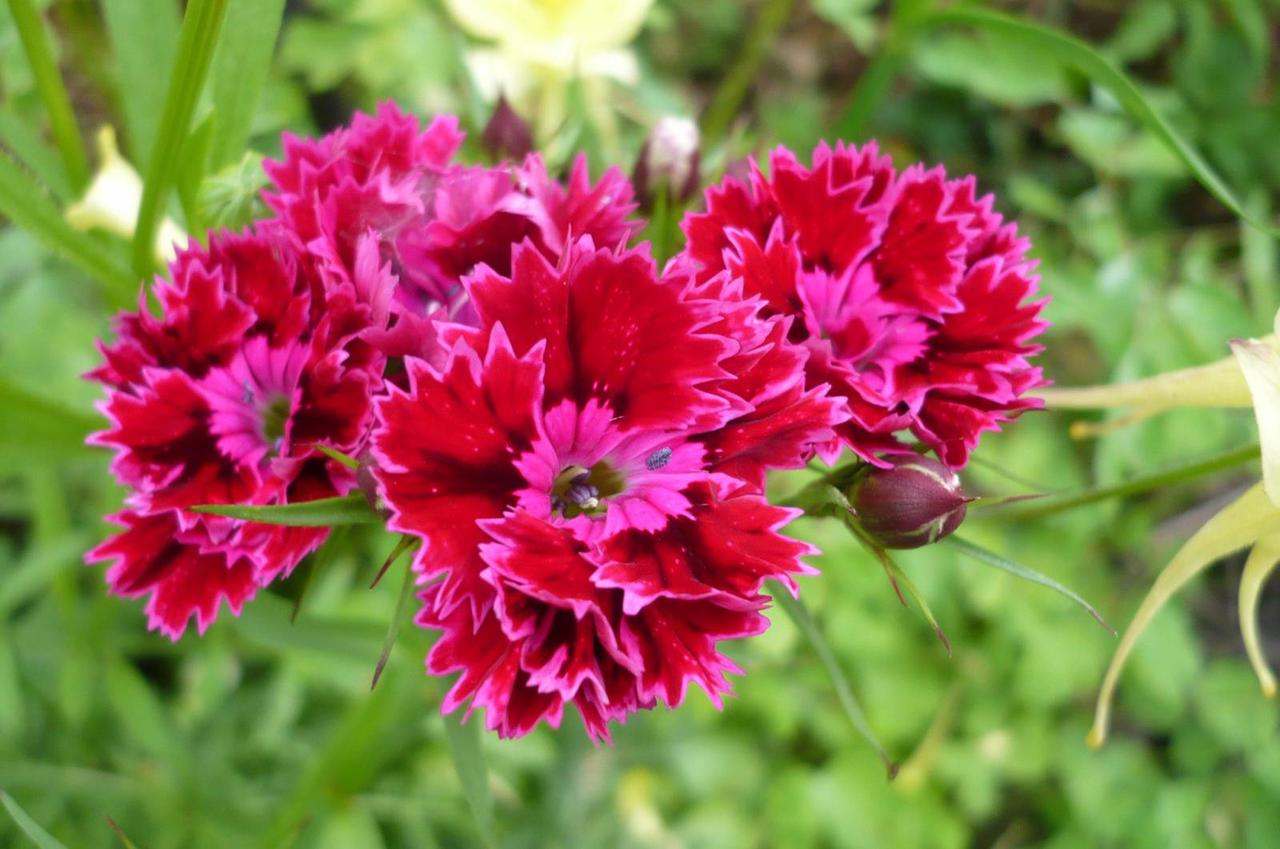Gardeners often plant lilacs on their plot so that it pleases with its unusual and bright flowering. Large and beautiful racemose inflorescences usually have an unusual specific odor. But, besides this, the bush itself gives any garden plot a well-groomed and blooming look. It is worth noting the fact that the greenery on the lilac bushes lasts until the very frost.
The flowering period depends on which variety will be chosen gardener for your site. So, ordinary lilac blooms from mid-May to late June. Today it can be argued that there are already more than 30 varieties and species of this plant, which belongs to the Olive family.
Description
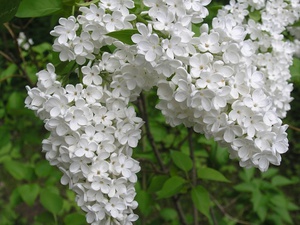 Varietal lilacs can always be the highlight of any garden plot, delighting the owners with their flowers. There are different versions of where the plant got its name from. One of them claims to be from the name of a musical instrument that was in ancient Greece. Such a flute was made by the forest god Pan from the reed, into which the nymph Siringu was once turned.
Varietal lilacs can always be the highlight of any garden plot, delighting the owners with their flowers. There are different versions of where the plant got its name from. One of them claims to be from the name of a musical instrument that was in ancient Greece. Such a flute was made by the forest god Pan from the reed, into which the nymph Siringu was once turned.
If we consider the poetry of symbolism, then we can trace that white is associated with first love. It is known that in some states of America there are even festivals dedicated to lilacs.
It is a lovely small shrub that blooms in May-June. The height of such a shrub fluctuates from 2 to 10 meters, and the trunk diameter depends on the age of the tree and can reach up to 30 centimeters. The leaves are opposite, which fall for the winter. Usually leaves are pinnate - separate, but there are also whole ones.
The inflorescence is also interesting: a panicle with small bisexual flowers.  The color can be very different: from white to dark purple. If you look closely, you can see two stamens in the flower. And these complex inflorescences themselves have a persistent and pleasant aroma.
The color can be very different: from white to dark purple. If you look closely, you can see two stamens in the flower. And these complex inflorescences themselves have a persistent and pleasant aroma.
The fruit is a small box, dense, brown, bivalve. It contains two oblong seeds in each valve. The bush can last up to 90 years.
Types and varieties of white lilac
Unfortunately, it has not yet been established exactly how many species there are in the modern world. Some botanists name 13 species, and others more than 30. But it's about natural species, but there are also hybrid varieties that have occurred as a result of crossing different species. But the number of permanent hybrid varieties cannot be precisely named, since they are constantly increasing. For example, hybrid varieties include:
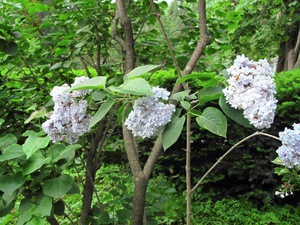 Hyacinthous. This variety was formed as a result of crossing broadleaf and common.
Hyacinthous. This variety was formed as a result of crossing broadleaf and common.- Chinese.
- Henry.
- Persian.
- Terry.
- Others.
But the view of the Persian lilac deserves special attention. Her can be attributed to hybrid varieties, since it appeared due to the crossing of two natural species: Afghan and small-cut. The appearance of this variety dates back to 1640. The Persian bush grows up to 2 meters high, its branches are spread out and thin.
Multi-flowered inflorescences reach a length of 10 centimeters, and their width will be equal to 7-8 centimeters. The color of the flowers is white or with a lilac tint, but very fragrant. Persian bushes begin to bloom in May and can end their flowering only at the end of June.This species easily tolerates both high frosts and droughts. Unfortunately, it is almost impossible to meet it in the wild, but it does not require special care either.
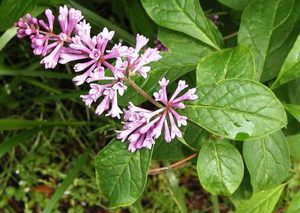 An interesting hybrid type of terry lilac, which has been widely used since 1855. Its height is usually 4 meters, but it has dense foliage. Got spread in some provinces of China... It differs in that the shoots rush up, and the young branches have a yellow-gray color.
An interesting hybrid type of terry lilac, which has been widely used since 1855. Its height is usually 4 meters, but it has dense foliage. Got spread in some provinces of China... It differs in that the shoots rush up, and the young branches have a yellow-gray color.
Inflorescences are 30 centimeters long, erect and paniculate. Inflorescence shape usually either pyramidal or cylindrical. The flowers are purple or tinged with pink, but very fragrant. The corolla has a narrow tube that expands upward. Terry blooms in June-July, therefore it belongs to the late varieties. Resistant to cold weather.
But the most common natural species are the following:
 Ordinary.
Ordinary.- Broadleaf.
- Hungarian.
- Zvyagintsev.
- Komarov.
- Wolf.
- Amurskaya.
- Mesh.
- Small-leaved.
- Fluffy.
- Feathery.
Common lilac is a small tree, the height of which ranges from 2 to 7 meters. This shrub has a well-branched root system. Its bark is gray and the branches are yellowish. The root system saves slopes from erosion. Oval leaves have pointed ends, they are oval and smooth. At the base, the leaves are cordate, 10 centimeters long and 5 centimeters wide. Deciduous petioles are 15 centimeters long.
Flowers of this species appear in May along with leaves. Usually flower inflorescences are dense and multi-flowered. The flowers themselves are small and fragrant... Most often, the species can be found in forests and on slopes. It has been proven to withstand the toughest frost, tolerate dry weather, and can even grow in areas with a lot of shade.
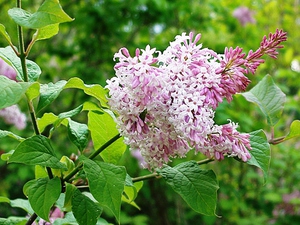 The broadleaf bush is similar to the ordinary one, but there are some differences: small flowers, large leaves and flowering begins earlier.
The broadleaf bush is similar to the ordinary one, but there are some differences: small flowers, large leaves and flowering begins earlier.
Shrub hungarian lilac grows up to 4 meters highand the trunk is gray. The shape of the leaves is interesting: oval, up to 3 centimeters wide, and up to 8 centimeters long. The roots of the leaves are small: up to 2 centimeters. The branches of this species are erect, if the bush is young, then they are slightly lowered. Flowers are collected in multi-flowered panicles, fragrant, dark. This bush blooms in June. You can find them in the forests of Ukraine, Hungary, Romania and Yugoslavia.
Other species are similar to the Hungarian bush, for example, the lilacs of Zvegintsov, Komarov, Wolf.
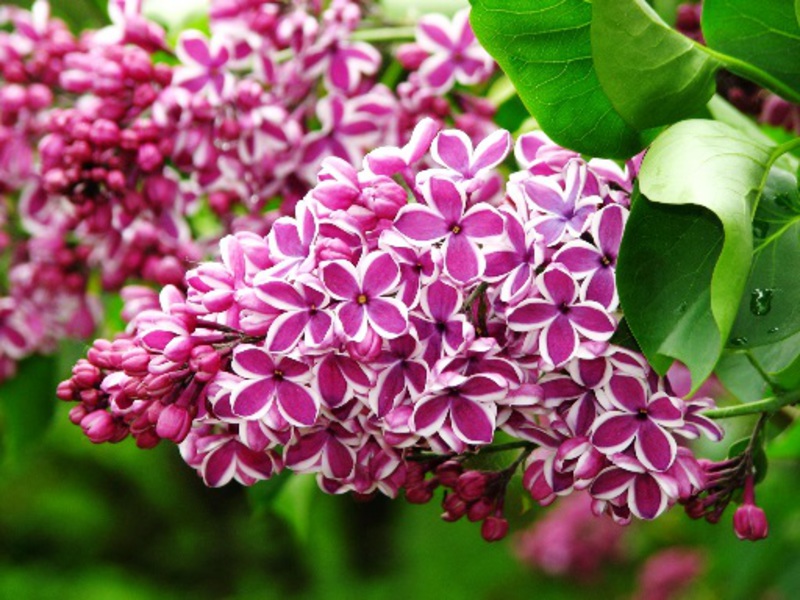
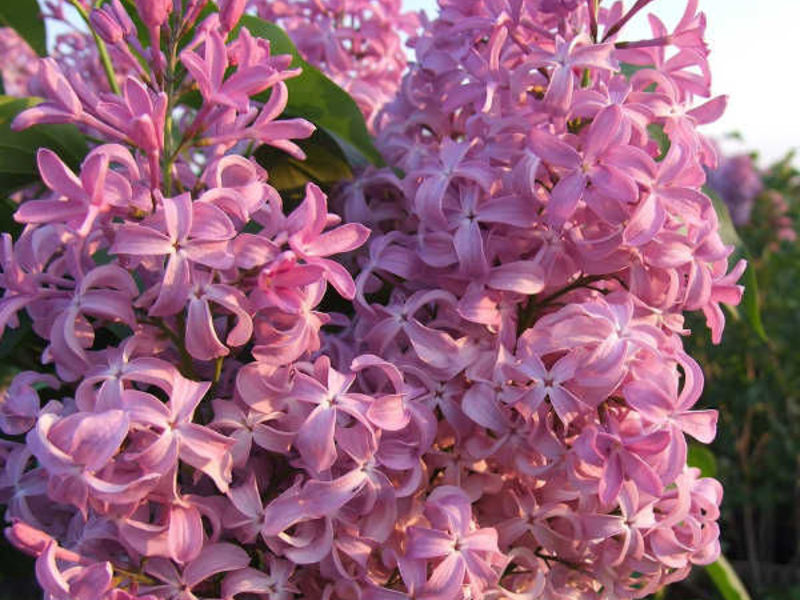
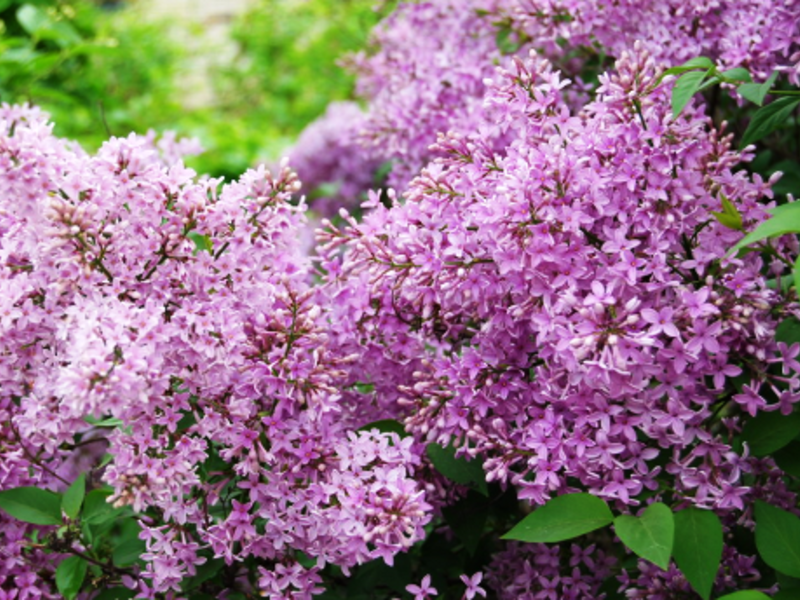
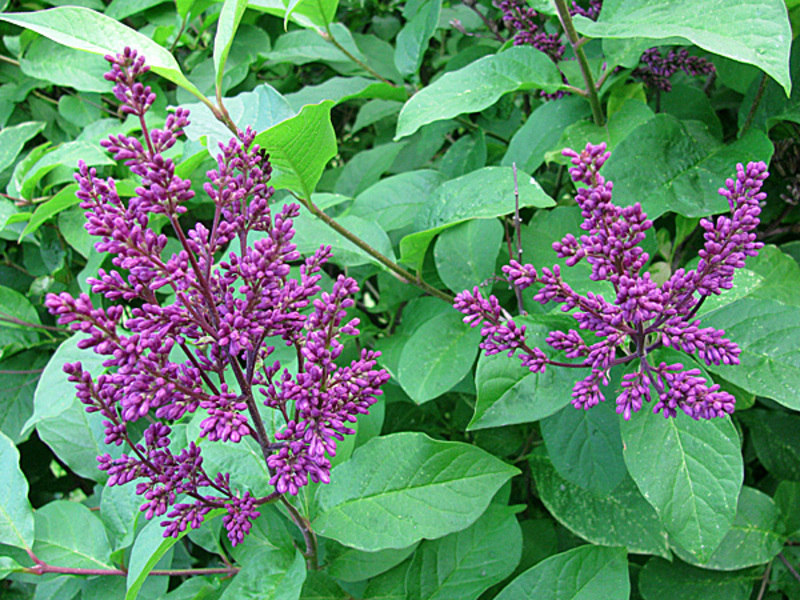

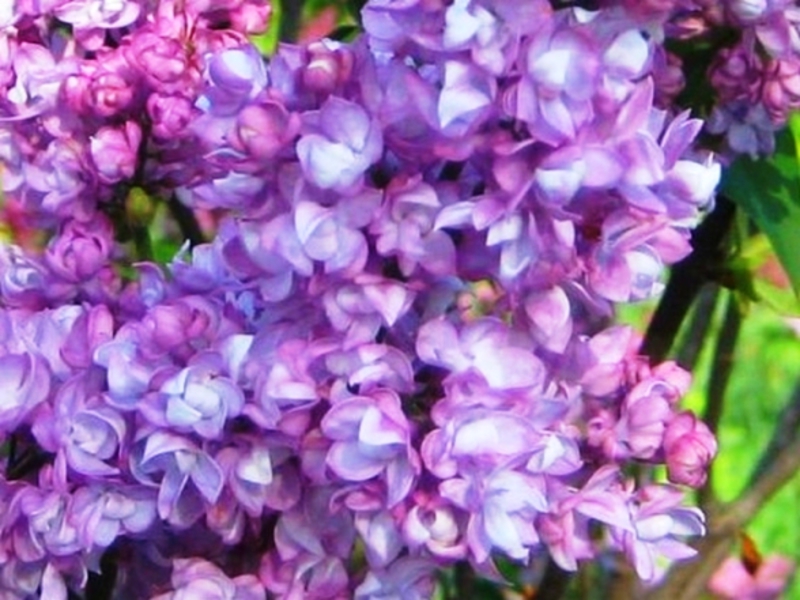
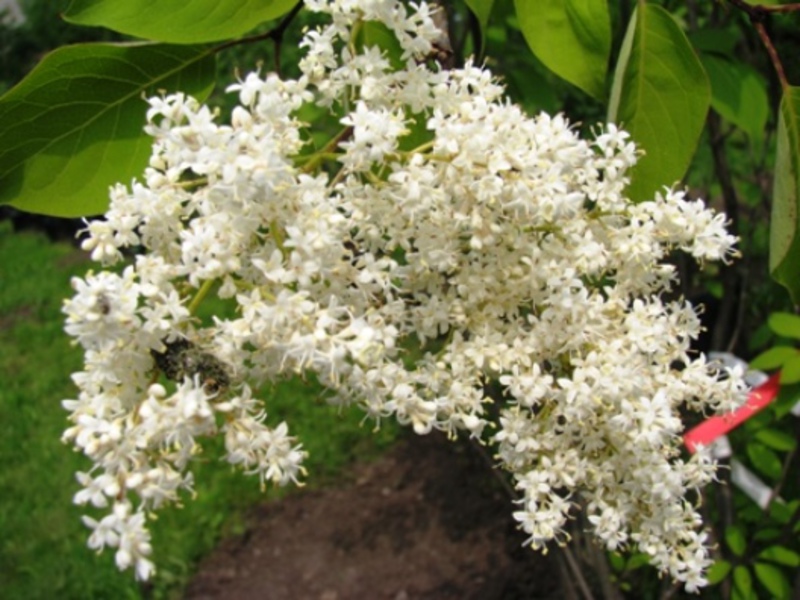
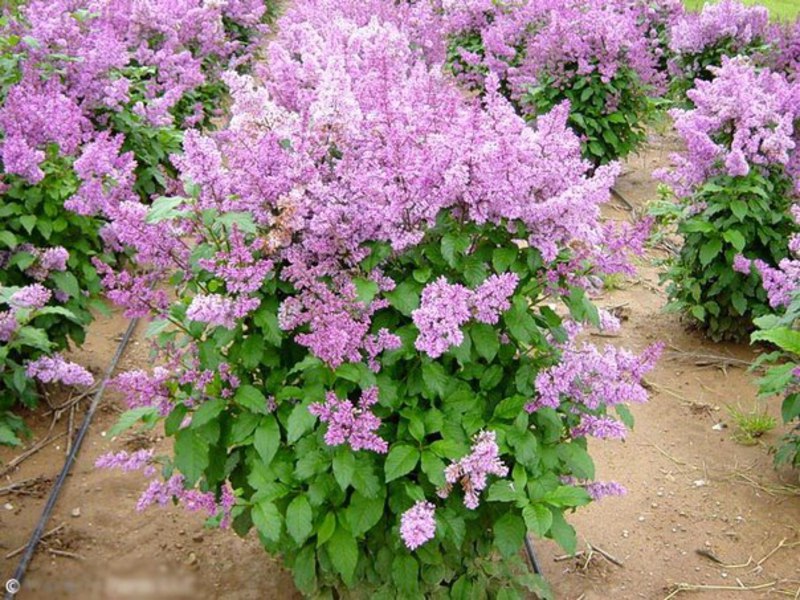
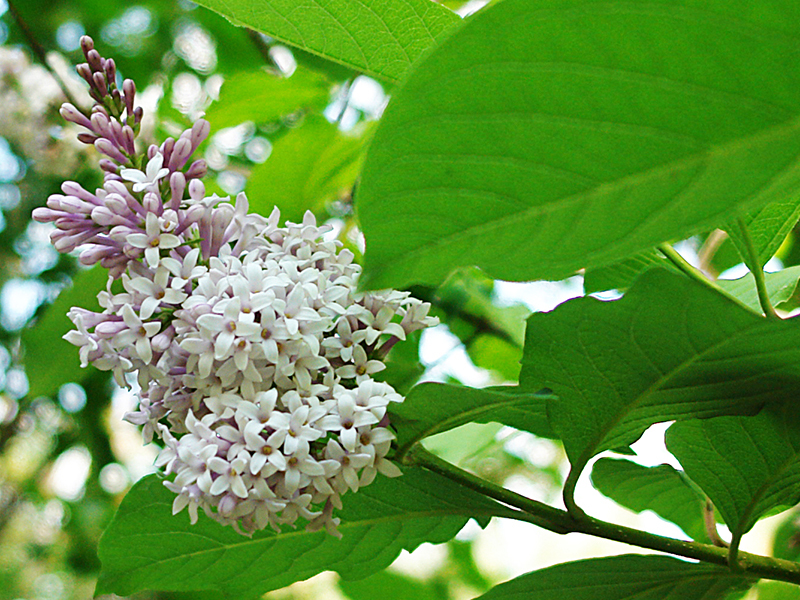

Amur lilac surprises with its size. She more like a treethan a shrub, because only its height reaches 10 meters. You can meet her in the Far East, therefore, flowering begins late, at the end of June.
The reticulated bush has fluffy creamy flowers. He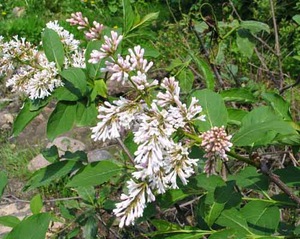 common in decorative floriculture West due to small leaves, as well as a kind of small-leaved bush and fluffy lilac. The pinnate species is distinguished by pinnately-separated leaves.
common in decorative floriculture West due to small leaves, as well as a kind of small-leaved bush and fluffy lilac. The pinnate species is distinguished by pinnately-separated leaves.
It is worth noting that an international classification of lilac exists, and in it the varieties are described based on the shape and color of the flower.
Growing and care
In order to plant a tree in your garden, it is necessary to choose those places with good lighting. Many varieties of lilac bushes do not like high moisture soil, as this can be detrimental to their root system. But the soil is rich in humus, slightly moistened, and with an acidity of 5 to 7 will be just ideal for them.
But for the winter, you do not need to cover and insulate them. But if the weather is hot and sultry, then watering the trees is simply a must. Loves lilacs and fertilizers, especially ash and mullein.
Reproduction
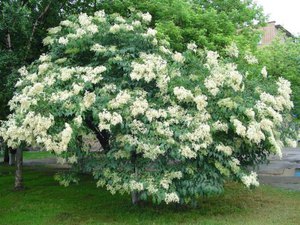 Today there are many ways breeding bushes. For example, growing from seeds. Of course, such a process requires a lot of time and attention. Usually, when grown in this way, it will bloom only for 5 years.
Today there are many ways breeding bushes. For example, growing from seeds. Of course, such a process requires a lot of time and attention. Usually, when grown in this way, it will bloom only for 5 years.
Another method of reproduction is to sow the shoots, but this is possible only if there is a good root system. But the very method of reproduction is cuttings.
Pruning
You cannot cut off the shoots of last year, since it blooms on them. But after flowering, it is necessary to remove all faded inflorescences. The crown is formed within 2-3 years, therefore, it is necessary to leave only 3-4 trunks, and cut off the rest. The main growth is removed at the base of the bush.
It is known that lilac bushes always bloom profusely and look simply luxurious. They help to create a unique landscape design in your garden. For example, they can be used to create a charming hedge. Lilac has existed for a long time, but the selection of new species does not stop it. Will look great in any garden and the use of bushes with different colors of flowers. If you pick them up with white and purple flowers, then they will look very gentle, and purple with burgundy - brightness and unique attractiveness. The combination of the plant with many representatives of the flora, for example, with peonies, is also wonderful.

